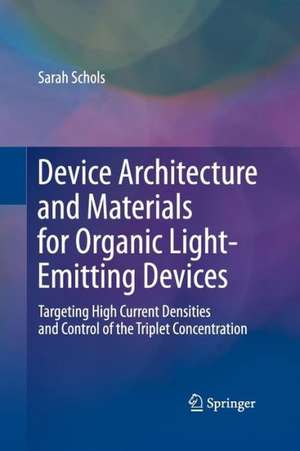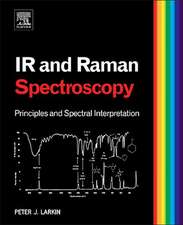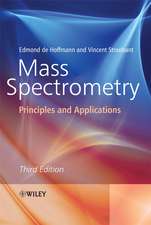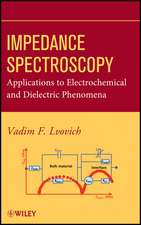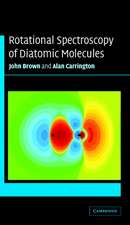Device Architecture and Materials for Organic Light-Emitting Devices: Targeting High Current Densities and Control of the Triplet Concentration
Autor Sarah Scholsen Limba Engleză Paperback – 16 oct 2014
| Toate formatele și edițiile | Preț | Express |
|---|---|---|
| Paperback (1) | 634.32 lei 6-8 săpt. | |
| SPRINGER NETHERLANDS – 16 oct 2014 | 634.32 lei 6-8 săpt. | |
| Hardback (1) | 640.37 lei 6-8 săpt. | |
| SPRINGER NETHERLANDS – 12 mai 2011 | 640.37 lei 6-8 săpt. |
Preț: 634.32 lei
Preț vechi: 746.26 lei
-15% Nou
Puncte Express: 951
Preț estimativ în valută:
121.38€ • 129.79$ • 101.20£
121.38€ • 129.79$ • 101.20£
Carte tipărită la comandă
Livrare economică 18 aprilie-02 mai
Preluare comenzi: 021 569.72.76
Specificații
ISBN-13: 9789400794030
ISBN-10: 9400794037
Pagini: 172
Ilustrații: XV, 154 p.
Dimensiuni: 155 x 235 x 9 mm
Greutate: 0.25 kg
Ediția:2011
Editura: SPRINGER NETHERLANDS
Colecția Springer
Locul publicării:Dordrecht, Netherlands
ISBN-10: 9400794037
Pagini: 172
Ilustrații: XV, 154 p.
Dimensiuni: 155 x 235 x 9 mm
Greutate: 0.25 kg
Ediția:2011
Editura: SPRINGER NETHERLANDS
Colecția Springer
Locul publicării:Dordrecht, Netherlands
Public țintă
ResearchCuprins
List of symbols and abbreviations. 1. Introduction.- 2. Materials and experimental techniques.- 3. OLEDs with field-effect electron transport.- 4. Devices based on diperfluorohexyl-quaterthiophene derivatives.- 5. Control of the triplet concentration.- 6. Triplet-emitter doped organic materials.- 7. Value of OLEDs with field-effect electron transport for lasing.- Bibliography.
Notă biografică
Sarah Schols was born on May 6, 1981, in Brugge, Belgium. She received her Master of Applied Science degree in electrical engineering (option nanotechnology) in July 2004 at the Katholieke Universiteit Leuven in Belgium. The topic of her master thesis was the fabrication of organic solar cells based on discotic liquid crystals.
Inspired by the challenges in organic electronics, she started her doctoral research in October 2004 at the Interuniversity Microelectronics Center (imec) to pursue her PhD degree at the Department of Electrical Engineering (ESAT) of the Katholieke Universiteit Leuven. Her doctoral research was funded by the Belgian Fund for Scientific Research (FWO) and focused on the design of new device architectures and material concepts for organic light-emitting devices. Currently, she is a Senior Researcher in the Large Area Electronics Department of imec.
Inspired by the challenges in organic electronics, she started her doctoral research in October 2004 at the Interuniversity Microelectronics Center (imec) to pursue her PhD degree at the Department of Electrical Engineering (ESAT) of the Katholieke Universiteit Leuven. Her doctoral research was funded by the Belgian Fund for Scientific Research (FWO) and focused on the design of new device architectures and material concepts for organic light-emitting devices. Currently, she is a Senior Researcher in the Large Area Electronics Department of imec.
Textul de pe ultima copertă
Device Architecture and Materials for Organic Light-Emitting Devices focuses on the design of new device and material concepts for organic light-emitting devices, thereby targeting high current densities and an improved control of the triplet concentration. A new light-emitting device architecture, the OLED with field-effect electron transport, is demonstrated. This device is a hybrid between a diode and a field-effect transistor. Compared to conventional OLEDs, the metallic cathode is displaced by one to several micrometers from the light-emitting zone, reducing optical absorption losses. The electrons injected by the cathode accumulate at an organic heterojunction and are transported to the light-emission zone by field-effect. High mobilities for charge carriers are achieved in this way, enabling a high current density and a reduced number of charge carriers in the device. Pulsed excitation experiments show that pulses down to 1 µs can be applied to this structure without affecting the light intensity, suggesting that pulsed excitation might be useful to reduce the accumulation of triplets in the device. The combination of all these properties makes the OLED with field-effect electron transport particularly interesting for waveguide devices and future electrically pumped lasers. In addition, triplet-emitter doped organic materials, as well as the use of triplet scavengers in conjugated polymers are investigated.
Caracteristici
A concise introduction gives an overview of the state-of-the-art organic light-emitting devices and highlights the challenges that have to be overcome to achieve electrically pumped lasing New device and material concepts for organic light-emitting devices are presented A chapter discussing the prospects of the proposed concepts for the realization of electrically pumped lasers Includes supplementary material: sn.pub/extras
